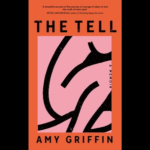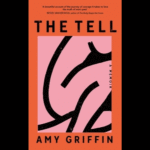Extremes. Extreme behaviour. When we hear that someone—say, Gabby—“acted extreme,” most of us picture her shaking her fist, lashing out, throwing a scene. Angry. Agitated. In other words, the word extreme almost always sparks a negative association in our minds.
But what if someone is extreme in their pursuit of perfection? —Setting aside the fact that, after a while, such people can be downright irritating to many—
Amy Griffin, author of The Tell, leads us through the life of a woman who, from early childhood, was programmed for success. Her parents, her surroundings, her schoolteachers, her coaches, her colleagues—all pushed her to be first, and to be flawless. As a girl, she was pretty; as an adult, attractive. She excelled in sports. Her environment was immaculate. Her performance always at 100%. And the list could go on.

But what about the inner lives of these people? What’s happening in their souls? Why do they chase recognition, one triumph after another? Can they even enjoy their victories? Are they truly present in their own lives? What’s the point of it all? What drives them?
These are the questions awaiting anyone who picks up this book—at times undeniably syrupy, yet comfortingly easy and quick to consume, like a good page-turner.
Our compulsively perfect protagonist senses it too: something is off in her life. Her body cracks under the strain—aches here and there. She battles sudden outbursts of rage, and in certain situations reacts in ways that at first seem inexplicable. —What a relief: in the end, she’s a little bit human too. And yet, from time to time, we all get a stroke of luck: her husband undergoes MDMA-assisted psychotherapy, which frees him from countless inhibitions and helps him navigate his own “perfect” life more easily—because, of course, he has one too. And so he suggests to Amy: why not try it yourself?
Before readers recoil in horror and toss this article aside, let’s pause to clarify what MDMA-assisted psychotherapy actually is.
MDMA (3,4-methylenedioxymethamphetamine)—better known as “molly,” “E,” or ecstasy in its pure form—is administered in microdoses during therapy. Doses so small they don’t disrupt the body’s hormonal balance or create dependency. Research shows that trauma survivors in MDMA-assisted therapy heal faster and more stably than those in traditional treatments.
How so?
Without diving too deep, it comes down to oxytocin release, essential for building trust and connection. It also alters norepinephrine and cortisol production—two key players in managing stress and dissolving fear.
So then, why not?!
In the end, Amy takes the leap and enters therapy—there’s no turning back. She must confront the fact that her idyllic Texas childhood was riddled with sexual exploitation, its shadow keeping her psyche in checkmate. This is the turning point: one that challenges not only the protagonist and her family, but also the reader. Here, once again, we come face-to-face with the patriarchal system that swept Amy’s struggles off the table of justice, postponing them indefinitely, Pató Pál–style (a Hungarian shorthand for endless procrastination)—even though we are in 21st-century Texas, USA.

Amy Griffin
This is where those who once said, “Enough already, this perfection is too much,” may begin to feel uneasy. This is the moment when paying closer attention to one another truly matters—because perhaps, through this very book, you might end up helping someone who desperately needs you.
For in the end, this is a memoir: Amy Griffin’s journey of confronting trauma, a true story of our time. Because reading is worth it.
Images are from the vast land of the internet.
Header is original local stuff.
For practicing some empathy read the article about Nunchi the Korean way of symbiosis HERE




























